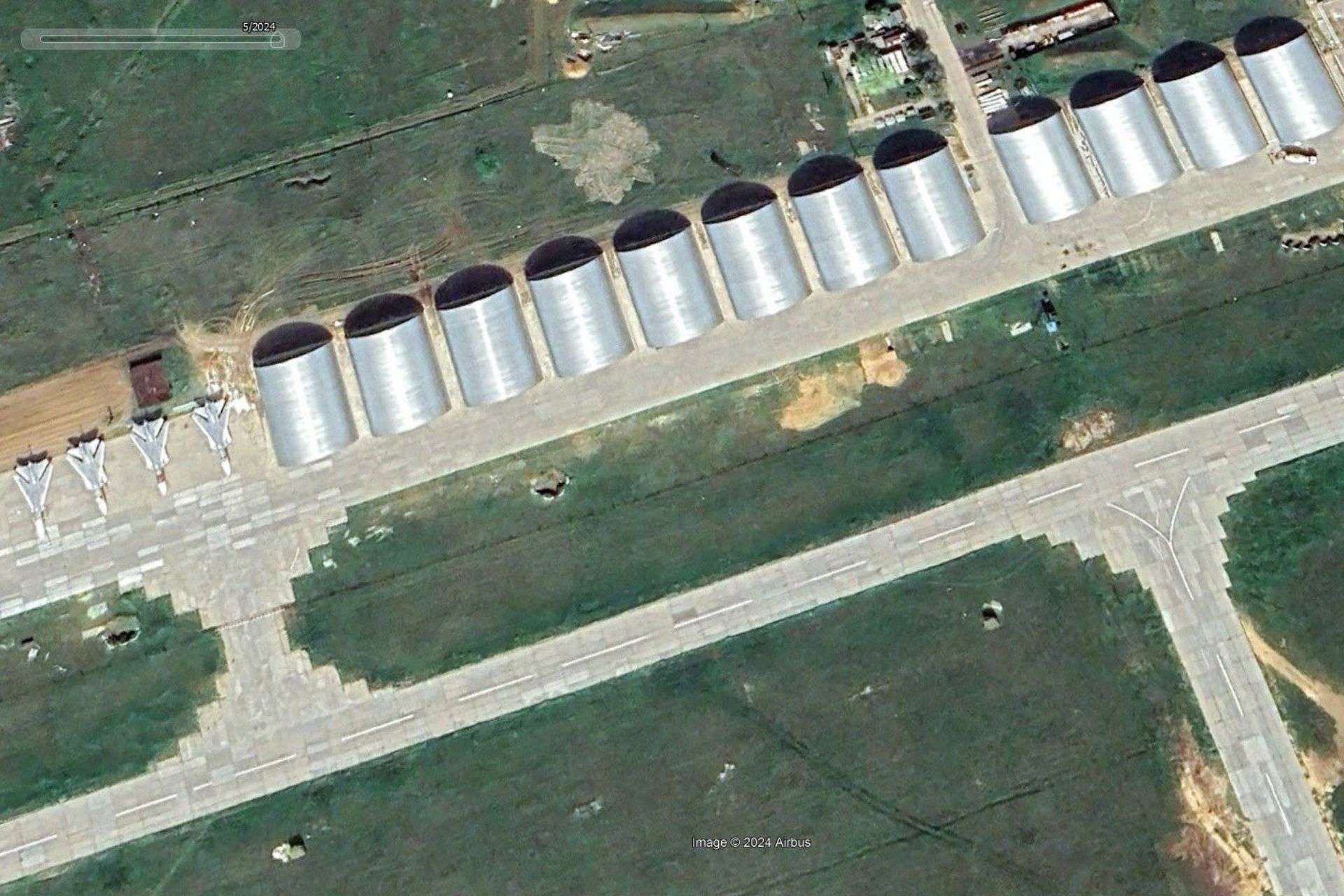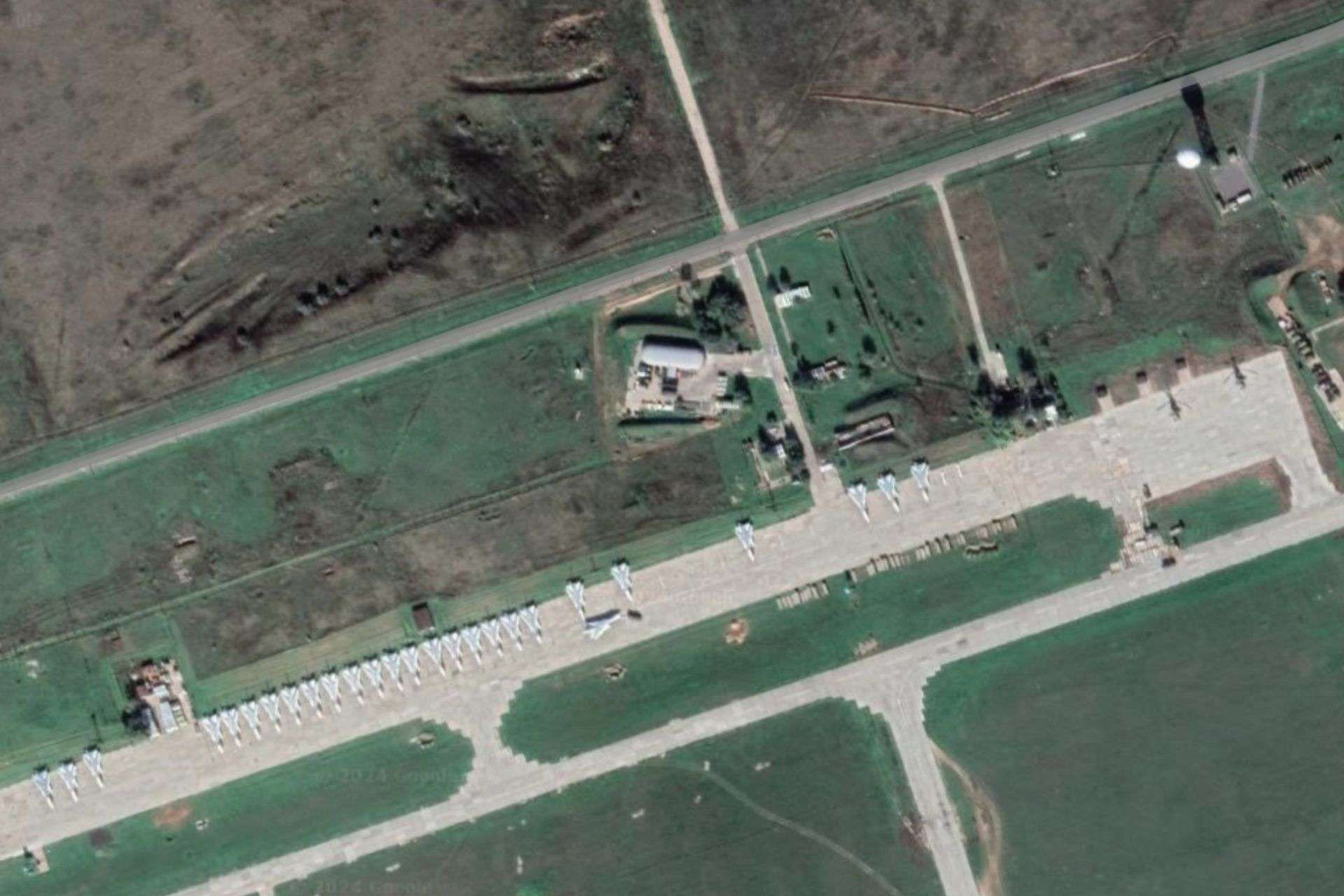Breaking news
Russia Fortifies its Airfields with Hangars While Europe Backs Ukrainian Strikes.
The Russian Federation has begun constructing protective hangars at the Marinovka airfield in the Volgograd region, approximately 300 kilometers from the Ukrainian border. This initiative aims to shield Russian aircraft from potential drone and missile attacks. Recent satellite images, shared on the social network X by @MilAvia, show new hangar structures designed to protect Su-24 frontline bombers and Su-34 fighter bombers.
Follow Army Recognition on Google News at this link

The photo shows 12 new hangars that provide shelter for Su-24 frontline bombers and Su-34 fighter-bombers (Picture source: Channel X by @MilAvia)
This move follows increased threats from Ukrainian attack drones and missiles. According to sources, the hangars are intended to protect aircraft from ATACMS ballistic missile submunitions. Additionally, these structures prevent satellites and other optical detection systems from determining whether a hangar is empty or occupied, enhancing operational security.
The materials used for these hangars are unspecified, but their appearance suggests minimal protection against debris. Historically, Russia has suffered significant aviation losses due to drone and missile strikes, with aircraft being destroyed in unprotected air parking lots. Previous protective efforts involved shelters covered with profiled sheets, which proved inadequate due to their limited thickness and debris protection.
The construction of these hangars reflects a shift in Russian defensive strategies, possibly in response to past incidents such as the attack on an airfield in Krasnodar Krai, which led to the dispersal of about 40 aircraft to various airfields further from the front line. Despite these efforts, the absence of specialized reinforced concrete shelters continues to leave Russian aviation vulnerable.
Military analyst Oleksandr Kovalenko commented on the situation, noting the paradoxical timing. He stated that if Ukraine had been able to strike Russian airfields earlier, the Russian Aerospace Forces might have been significantly weakened. The recent construction of protective hangars suggests a delayed but necessary adaptation to ongoing threats.
The installation of these structures occurs as several European countries have authorized Ukraine to strike bases in Russia. Poland recently expressed support for Ukraine's use of Western-supplied weapons to attack targets on Russian territory. Cezary Tomczyk, Poland's Deputy Defense Minister, asserted that Kiev should be free to use these weapons without restrictions, including those provided by Poland.
However, this position is not universally shared among European allies. German Chancellor Olaf Scholz has clearly opposed Ukraine's use of Western-supplied weapons to strike Russian territory. Scholz emphasized that German arms deliveries are conditioned by strict rules to prevent the conflict from escalating into a major war.
Conversely, other European countries support allowing Ukrainian strikes on Russian territory. Latvia, for example, has revealed that some allies have already permitted Ukraine to use weapons without public restrictions for strikes in Russia. Latvian Foreign Minister Baiba Braze indicated that while this approach is not always publicly announced, it is applied in some cases to allow Ukraine to defend against legitimate targets in Russia, particularly military installations.
Additionally, NATO Secretary General Jens Stoltenberg has urged allies to reconsider restrictions on the use of weapons supplied to Ukraine for strikes in Russia. He stressed that these restrictions limit Ukraine's ability to defend itself effectively, especially against attacks originating just across the border.
Thus, although European positions are divided, there is a growing trend to lift certain restrictions to enable Ukraine to respond more effectively to military threats from Russian territory.

The first photo shows Su-24 bombers and Su-34 fighter-bombers before the hangars were built (Picture source: Channel X by @MilAvia)


























